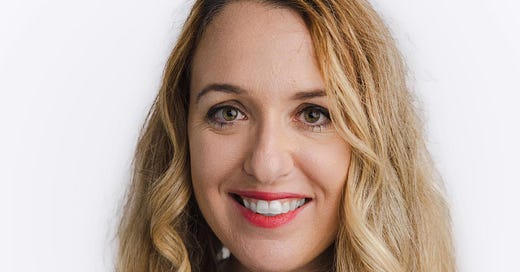Good afternoon,
For you newbies out there, welcome to Outsider on the Inside. I hope this dispatch from in and around the nation’s capital on underreported topics finds you well.
If you’re just discovering my musings, here’s a backgrounder and make sure we’re connected on Facebook, Instagram, Twitter, and YouTube.
Before I head out on vacation for the next week, here’s what I have for you today.
USDA’s Fowl Move
From my new Townhall.com on the USDA APHIS’s fowl decision to ban harvested wild game bird imports from Canada.
An excerpt:
Is HPAI in Canada a reason to stop importing harvested wild game birds back here? The USDA APHIS is jumping the gun here.
Despite being a problem, the Canadian Food Inspection Agency reports HPAI isn’t “a food safety concern”—adding there’s “no evidence to suggest that eating cooked poultry or eggs could transmit HPAI to humans.”
A 2018 report from Cornell Lab of Ornithology notes over 4 billion birds migrate from Canada into the U.S. annually every fall.
Forbes contributor Chris Dorsey wrote about bird migration patterns, explaining,“Waterfowl with the ailment, especially, often manifest few symptoms of infection and a duck can travel 800 miles in a single eight-hour migratory flight, leaving many biologists scratching their heads at the justification for the APHIS rule.”
Michelle Carstensen, Minnesota Department of Natural Resources (DNR) wildlife health group leader, questioned the USDA’s decision and expressed her concerns to the Minneapolis Star-Tribune.
"In the last outbreak, in 2015, hunters' harvested birds were excluded from the import ban,'' Cartensen told the publication. "How a hunter bringing a bird that is in a cooler and cleaned except for having a wing on it could threaten poultry in Minnesota or elsewhere, I'm not sure.''
Survey: More Women Becoming Self-Employed
As the freelance economy grows, it shouldn’t surprise us to see more women voluntarily seeking out self-employment.
New analysis from the Center for Economic and Policy Research reveals women - and increasingly non-white women - are choosing the freelance lifestyle.
From the news release: “Although reasons for choosing self-employment vary, the ongoing childcare crisis has made it difficult for working-class mothers with young children to seek or maintain conventional payroll jobs. Part of the rise in self-employment is likely due to some of these mothers shifting from payroll jobs to self-employment in order to meet work-family responsibilities.”
A good summary of growth in self-employment and which demographics benefitted most:
Another noteworthy pattern is that the increase in self-employment is entirely among people with less education. There is a modest decline in self-employment among workers with a bachelor’s degree or more. This would be consistent with a situation where more educated workers had more opportunities for finding a payroll job that allowed them to work from home. If workers with less education could not find a job that allowed them to work from home, they would have more reason to look to self-employment as an alternative.
The patterns of incorporated versus unincorporated self-employment also provide interesting insights. The youngest and less-educated workers were more likely to see increases in unincorporated self-employment, while older and more educated workers had most or all of their gains among the incorporated self-employed. Given that incorporated self-employment is usually longer lasting and implies a greater commitment, this dynamic is unfortunate and seems to further existing patterns of inequality.
On the other hand, in own percent terms, there were very large increases in the share of Black and Hispanic workers who report being incorporated self-employed. The shares for both increased by roughly 45 percent. While this still left the incorporated self-employed share well below the figure for whites, this is a substantial gain in a relatively short period of time. If it is sustained, it will imply substantial gains in business ownership for Blacks and Hispanics.
RIP Queen Elizabeth, Hunting Icon
Did you know Queen Elizabeth II was the first woman ever to grace the cover of Field & Stream Magazine? She’s one of three women to have that honor in 1976. Canadian-born Eva Shockey followed a while later in 2014, followed by my friend Mia Anstine, the first American woman, in 2016.
F&S reprinted the January 1976 cover story featuring Her Majesty and her hunting dogs in remembrance of her illustrious life. Below is a snippet:
Two hundred years ago the United States was rightfully called New England. So, as one American, I went home to celebrate our nation’s Bicentennial. But, I went not to city folk, though they, too, gave America a legacy: parliamentary law, architecture, lifestyle, religion, and later—the Beatles. I went instead to rural Britain. And that is how I came to the Queen’s attention. For though the world may know this lady as “Elizabeth the Second, by the Grace of God of the United Kingdom of Great Britain and Northern Ireland and of Her other Realms and Territories, Queen, Head of the Commonwealth, Defender of the Faith,” I met bark-knuckled, wind-tanned, tattered-cuffed men who hushed in admiration. “She’s but a simple country girl who loves the land and sacrifices herself to duty. ’Tis a grand thing she does. Capable in her reign she is, but her heart is upon those things of the fields. Aye, the moor’s winds claim her ear more to her liking than the spoken flattery of man.”
ICYMI
Articles/ commentary/media appearances from the past week.
MEDIA APPEARANCES:
n/a
ARTICLES/BLOGS
Podcasts You May Have Missed
Catch up on District of Conservation episodes below.
Thank you for reading! Let me know your thoughts and encourage your friends to subscribe to the newsletter too.
—Gabriella



